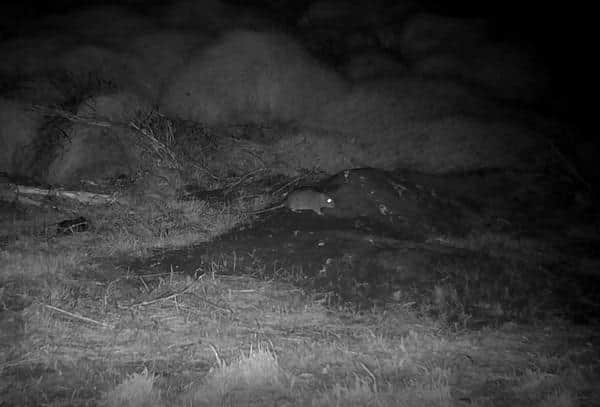Uri Geller praises kayak club volunteers who tracked down a rat on his Scottish island
The celebrity spoon bender bought The Lamb, a small uninhabited island in the Firth of Forth, in 2009, and believes the rocky outcrop is "one of the most significant sites in Britain".
Conservationists discovered evidence of rodent activity on the island in 2020, leading to fears for seabirds including puffins and guillemots.
Advertisement
Hide AdAdvertisement
Hide AdMotion-triggered cameras revealed there was likely only one individual rat present, and the elusive male was finally caught almost two years after the initial discovery.


Because there are no landing facilities on the island, the success was only made possible by a small team of volunteers from the Lothian Sea Kayak Club, supported by experts from the Scottish Seabird Centre in North Berwick.
Geller, 75, said: "These are a dedicated team of volunteers from the Lothian Sea Kayak Club, and they made sure that one rat would be captured.
"I was astounded when I saw the infrared image of the rat. My island is not that tiny so to locate one rat is a big achievement, so I'm very pleased. Thank you very much, a big hug and good positive energy from me to them."
Geller, now 75, bought The Lamb from internet entrepreneur Camilo Agasim-Pereira in February 2009, for £30,000.


Located between Craigleith and Fidra, the three rocky islands are said to mirror the layout of the pyramids at Giza, near Cairo in Egypt, built 4500 years ago.
Geller told Radio Scotland the connection was documented in a 15th century document he was alerted to by the Egyptian businessman and former Harrods owner Mohamed Al-Fayed.
He said: "Very few people know that Lamb Island is basically a mysterious and enigmatic island and it is claimed to be one of the great pyramids of Scotland. Actually, no one knows that in Scotland.
Advertisement
Hide AdAdvertisement
Hide Ad"Lamb Island is basically a volcanic outcrop in the Firth of Forth, north of Edinburgh, and it's really one of three rocky outcrops which mirror - and this is amazing - the layout of the pyramids at Giza, near Cairo in Egypt.


"I was always fascinated by the connection between the pyramids and these islands. The connection has been known for centuries, you can read about it in a 15th century manuscript called the Scotichronicon written by an abbot, Walter Bower.
"When I heard that Lamb Island was for sale I really felt a strong instinctive urge to buy it and the more I delved into the history and the archaeological lore which surrounds it, the more I became certain that this is one of the most significant sites in Britain."
He added: "Many archaeologists would laugh off my theories that in ancient times, 3500-4000 years ago the Egyptians managed to sail to north Europe.
"The story that I heard was that Queen Scota moored outside my Lamb Island and that's why some people believe that Scotland is named after Scota, the queen of one of the pharaohs."
Geller said after he bought the island that it could contain hidden Egyptian treasure.
He said there was an "unsubstantiated rumour" that victims of the infamous North Berwick witch trials of 1590 might also be buried on his island.
He said: "Witches were hung, they were beaten to death, they were prosecuted, they were burned. There is a rumour that some witches were actually buried on Lamb Island."
Geller said the last time he was in Scotland was "years ago" as he had left England and now lives with his wife Hannah in Israel.
Comments
Want to join the conversation? Please or to comment on this article.